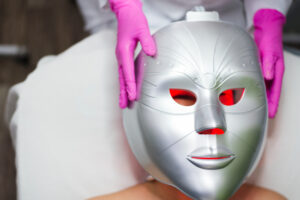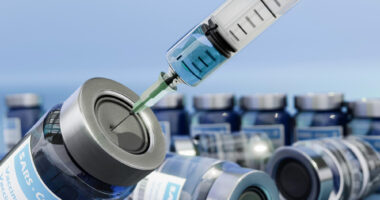In recent years, LED masks have gained popularity as an innovative skincare tool promising a range of benefits, from reducing acne to rejuvenating ageing skin. But are these futuristic-looking devices worth the hype? Let’s delve into what LED masks are, how they work, their potential benefits, and whether they are suitable for your skincare routine.
What is an LED Mask?
An LED (Light-Emitting Diode) mask is a skincare device that emits different wavelengths of light to target various skin concerns. These masks typically come with different-coloured lights, each serving a specific purpose in skincare treatment.
Red Light: Stimulates collagen production, reduces inflammation, and promotes healing. It’s effective for anti-ageing and improving overall skin texture.
Blue Light: Kills acne-causing bacteria on the skin’s surface, making it beneficial for treating acne and preventing breakouts.
Yellow Light: Reduces redness and irritation, ideal for sensitive skin types and those with rosacea.
Green Light: Targets hyperpigmentation and helps to even out skin tone.
Purple Light: Combines red and blue lights to target acne and improve skin healing.
White Light: Penetrates the deepest layers of the skin, promoting overall skin rejuvenation and tightening.

How Do LED Masks Work?
LED masks utilize specific wavelengths of light that penetrate the skin at varying depths. These lights stimulate cellular processes, such as increasing collagen and elastin production, accelerating skin repair, and reducing inflammation. Unlike laser treatments, LED therapy is non-invasive and generally painless, making it suitable for regular at-home use.
Benefits of Using an LED Mask
Improves Skin Texture: By stimulating collagen and elastin production, LED masks can improve skin firmness and smooth out fine lines and wrinkles.
Reduces Acne: Blue light targets acne-causing bacteria, helping to clear existing breakouts and prevent new ones from forming.
Calms Inflammation: Red and yellow lights are effective in reducing redness and inflammation associated with conditions like rosacea and eczema.
Enhances Product Absorption: Using an LED mask before applying skincare products can enhance their absorption, maximizing their effectiveness.
Non-Invasive: Unlike invasive treatments, LED masks are gentle on the skin and require no downtime, making them convenient for regular use.

Considerations Before Using an LED Mask
While LED masks offer promising benefits, they may not be suitable for everyone:
Skin Sensitivity: Individuals with susceptible skin may experience irritation from specific wavelengths of light. It’s essential to start with shorter sessions and monitor your skin’s reaction.
Consistency: Like any skincare regimen, consistent use is critical to seeing results with LED masks. Most manufacturers recommend using the mask several times per week for a specified period to achieve noticeable improvements.
Consultation: If you have underlying skin conditions or are unsure about integrating an LED mask into your skincare routine, consult a dermatologist or skincare professional for personalized advice.
Conclusion
LED masks can be a valuable addition to your skincare routine, offering a non-invasive and effective way to address various skin concerns, from acne to signs of ageing. However, results may vary depending on individual skin types and conditions. Before incorporating an LED mask into your regimen, consider your skin’s sensitivity and consult with a skincare expert if needed. With regular use and proper care, an LED mask can help you achieve healthier, more radiant skin.
In summary, while LED masks show promising benefits for skin health, their effectiveness depends on consistency and suitability for individual skin types. Always prioritize skin safety and consult with a professional for personalized skincare advice.









